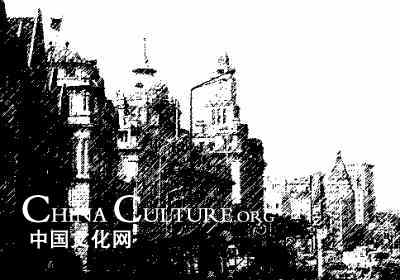| Protecting the Cultural Heritage Sites of the 20th Century |
|
For example, the Qianmen east railway station is an early architecture of the Chinese railway; nowadays, the station has been reconstructed into a big bazaar, filling with stores and booths. Improper protection will damage cultural heritage sites as well. As reported, there are 308 celebrities’ former residences in four districts of Beijing, most of which are short of protection and restoration, with the exception of only 8 former residences that have been opened as museums and memorials. The cultural heritage sites of the 20th century have witnessed modern history. Continually preserved during their use, most of them haven’t been undermined by nature; therefore, they still serve as “living heritages” for social production and life. In China, the 20th century’s cultural heritage sites condense China’s modern history, of which the foreign settlements, the remains of modern industrial and commercial circles and the villas with Chinese and western elements gather different nations’ characters together, which are precious for studying the Chinese modern architecture and the cultural exchange between China and western countries.
Waitan (the bund)in Shanghai However, most of cultural heritage sites in China haven’t been respected properly. The biggest difficulty is the scarcity of experts, theory and experience in protecting; the imperfection of relevant laws and regulations; and the shortage of human resources and financial investment. More and more cultural heritage sites have been torn down for construction of plazas, roads and urban redevelopment. Nearly half of the buildings listed as the 20th century’s Chinese architectural heritage sites by Architectural Society of China haven’t made it to the list of Key Cultural Relics under State-level Protection. Some local governments have implemented a series of regulations protecting the historical buildings, but there is a difference in the recognized standard of the buildings’ existing years. The buildings with a history of more than 30 years are protected as historical architectures in Shanghai and Wuhan; but they should be more than 50 years in Hangzhou and Tianjin. Moreover, the cultural heritage sites of the 20th century have aroused a number of controversies, making part of them lost the recognition and protection from public. In 2006, the reconstruction of the National Museum aroused wide controversies in whether to demolish the comfort women center (where the Japanese government ran frontline brothels, pressganging women from Korea, China, the Philippines and Indonesia to serve as “comfort women” in World War II) in Nanjing. And some times, the 20th century’s heritage sites and ancient heritage sites will conflict with each other. Finished in 1976, the 180-meter-high chimney in the 2nd thermo-eletric plant of Beijing is inharmonious with the nearby Tianning temple. At present, the plant has been relocated; should the chimney be preserved as one of 20th century’s cultural heritage or be demolished to better protect the ancient heritage is an endless controversy. |
|


